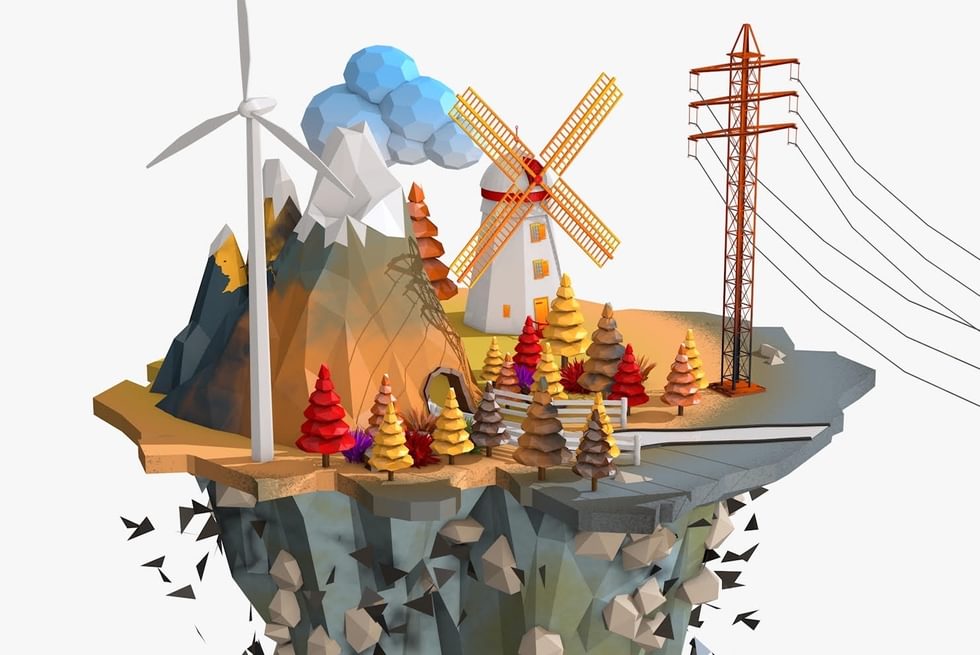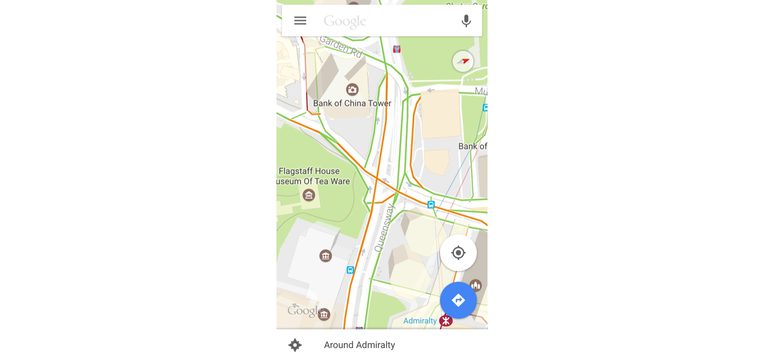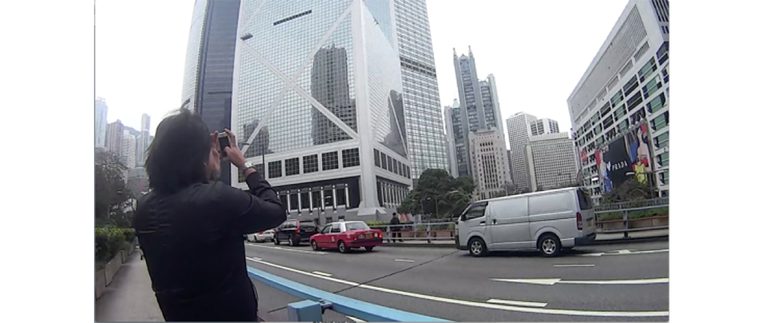Surface
From the Series: Speaking Volumes
From the Series: Speaking Volumes

There is nothing you can dominate as easily as a flat surface of a few square meters; there is nothing hidden or convoluted, no shadows, no “double entendre.”
—Bruno Latour
Mohammed stares at the map, struggling to triangulate the surfaces of the buildings he sees there against the surfaces of the urban fabric around us, his GPS location as a fulcrum.
“The buildings don’t really look like the buildings,” he notes woefully. Mohammed is an architect. Traveling from Kuala Lumpur the previous night, this is his first time in Hong Kong. “Yeah, this is not right.”

On one hand, Mohammed’s map is a grid comprised of infinite squares, which are optimal for calculation and tessellate with maximum efficiency. On the other, a circle, possible paths radiating inward and outward, producing hierarchal rings with the innermost sanctum of power in the center.
On one hand, we skate across the surface of a universal cartography: coordinate systems, navigation charts, rectilinear urbanism, digital and mobile maps and three-dimensional modeling software. On the other hand, we place ourselves at the center of our own cartography: medieval cities, panopticons, boulevards, sonar and radar technology, geolocative applications and augmented reality.

These are surfaces produced and reflected in the logics of cartographic reason, which strives to transform the representational and material world into a single, stable, universal order (Farinelli 2009). Geometries penetrate into cultures and communities, translating the scales of the local and global into the same language.
The ancient theoretical problem of the quadrature of the circle, or how to turn circles into squares and squares into circles, was limited by the finitude of materiality. This finitude, Franco Farinelli (1994) argues, is not only a question of geometry but of political materiality—of ideologies that deployed geometries in order to construct living spaces (like the Bank of China) in their image. The mappa, the plan, the chart, the carte, the pinax, and the tablet are characterized by surfaces, upon which landscapes are depicted, territories negotiated, and social relations structured.
Across these flatnesses “realms of reality that seem far apart . . . are inches apart, once flattened out onto the same surface” (Latour 1986, 26). The relationship, then, between Euclidean geometry and the materialities in which we live our lives is one of surfacing. The surface is a translator (Latour 1986; Serres 1968) through which the domination of space, the production of inhabited territories, and the shaping of political identities can be exchanged.
An infinite series of points becomes a line, an infinite series of lines becomes a surface, and an infinite series of surfaces becomes a three-dimensional shape. Stretching upward and downward, these surfaces transform into a volumetric dimensionality. Squares become cubes, and circles become cylinders and spheres. At the limits of these representations—and in the material expression of ideology—new surfaces are formed that stretch along three-dimensional axes, an infinite series housed within a definitive casing. Under cartographic logics in volumetric geometry—buildings, architectures, spaces, maps—the question of surface transforms from living upon to living within.

Between cubes and spheres territorial tensions arise. In cubic space, surfaces run horizontally and vertically across habitats. Walls are built straight up, and floors straight across. The spirit level rules our urban spaces: territories formed through a dogged parallelism. The sphere is the master of surveillance. From security cameras to Google cars, from the center or the top, the limit is of vision, not ideology.
Theoretically, surfaces merge seamlessly into a three-dimensional object. However, when geometric logics are transferred into material representations, the limits of the material mean that they must not only formalize, but also generalize (Farinelli 1994).

In volumetric geometry, spheres can be generalized from three circles and cubes from three squares. Outside terrains, themselves surfaces, form the protective territory of the volume. Here, hierarchies emerge: which surfaces should we choose to make visible? Or, what is the territory and where is its boundary? What’s public and what’s private? Where are the anchors, zero points, edges, limits? Territoriality becomes geometry, and “the geometric form can become a principle that constitutes and regulates the universe” (Farinelli, 1994, 21).

But move gently, because surfaces within and around volumes are devious reductions that erase unknown heterogeneities. The surfaces of our experiences are only partly bound through such logics. What of crooked walls and rough floors, or obstructions and reflections? Porous, our surfaces are contravened constantly by odors and heat and pollen and dust. Permeable cultures, ideas, images, waves, magic, parasites—all manner of matter and force—assemble and reassemble in an antigeometry defined by transgression instead of territory.
Farinelli, Franco. 1994. “Squaring the Circle, or the Nature of Political Identity.” In Limits of Representation, edited by Franco Farinelli, Gunnar Olsson and Dagmar Reichert, 11–28. Munich: Accedo.
_____. 2009. La crisi della ragione cartografica. Torino: Einaudi
Latour, Bruno. 1986. “Visualization and Cognition: Thinking with Eyes and Hands.” In Knowledge and Society: Studies in the Sociology of Culture Past and Present, edited by Henrika Kuklick, 1–40. Greenwich, Conn.: Jai Press.
Serres, Michel. 1968. Hermes. Paris: Éditions de Minuit.